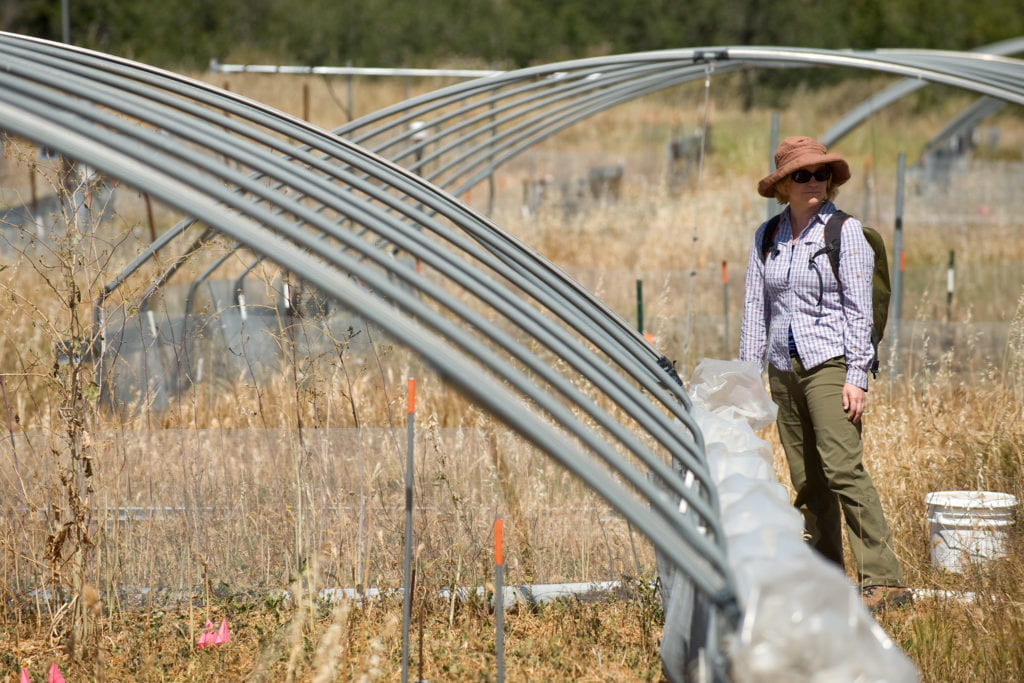National conference opens flow of ideas on drought
Top researchers, public officials and policymakers converge at UCI to discuss extreme water shortages and how to handle them

Each year, California growers bet a good part of the farm that there’ll be enough water to produce a profitable harvest. Costly crop failure insurance can help hedge their bets, but must be purchased by strict deadlines – before it’s clear whether the state will face another year of withering drought.
UCI engineers and others hope to reduce that age-old risk by helping farmers gauge the prospect of drought as much as a month earlier, thanks to sophisticated new modeling techniques.
“We’re combining NASA satellite data records of water vapor and relative humidity and other information to improve early-onset drought detection,” says civil & environmental engineer Amir AghaKouchak, who – with his students at UCI’s Center for Hydrometeorology & Remote Sensing – is designing advanced methods to predict the beginning and end of crippling water shortages. Armed with the data, state planners could spread the word in time to help not just the agriculture sector but all water users.
Better drought forecasting is one urgent topic being discussed this week at UCI by top researchers, water managers and officials from across the state and the U.S. They’re exploring the latest findings and fast-moving government responses at a three-day conference called “California Drought: Causes, Impacts & Policy,” co-hosted by UCI and the American Geophysical Union at the Arnold & Mabel Beckman Center of the National Academies of Sciences & Engineering.
Speakers include Jeanine Jones and Michael Anderson of the California Department of Water Resources, former California Secretary of Agriculture A.G. Kawamura and experts from the National Oceanic & Atmospheric Administration, the U.S. Geological Survey, Stanford University and the Metropolitan Water District of Southern California.
“It’s important for people to understand the sharply focused questions surrounding the drought. One of the things that UCI brings to this is strong interdisciplinary and boundary-spanning thinking about how to address the critical challenges, both in California and across the planet,” says social ecologist David Feldman, director of the Water UCI initiative. “This requires science of all kinds: natural science, physical science, engineering science, and social and policy science. Not only are we doing research in all of these areas, but our faculty is tightly networked with groups of peoplearound the world who are involved in exactly these types of boundary-spanning work.”
This summer, Feldman and engineering professor Stanley Grant will return to Australia, where they’re collaborating with colleagues at the University of Melbourne who helped that country survivethe devastating “millennium drought.” Grassy medians were ripped out long ago, and pioneering water recycling and conservation techniques keep both household faucets and creeks flowing. University of California students in a variety of fields will accompany them.
California is in its fourth year of record drought, affecting 30 million people and nearly 5.7 million acres of farmland. Following the lowest snowpack ever recorded and with no end in sight, Gov. Edmund G. Brown Jr. on April 1 ordered cities and towns to cut water use by 25 percent – a first in state history. The conference aims to highlight key research gaps and produce a road map for future work. The panelists will explore drought monitoring and prediction, impacts on water supply and ecosystems, possible links to climate change and policy to enhance resilience.
One group of hardy Californians is holding up well: the state’s native wildflowers. The colorful little annuals, with seeds adapted to wait out dry spells, got the right amount of rain at the right time this year, according to UCI biologists. In a long-term experiment, native wildflowers actually preferred plots of soil that received less water than normal. This year, despite the drought, splendid mariposa lilies, red maids, California poppies, chocolate lilies and pinks have all bloomed on Orange County wildlands.
“We have evidence to suggest that many of the native wildflowers are more resistant to drought and that nonnative grasses are not as resistant,” says project scientist Sarah Kimball. She notes that the invasive species are still a major threat to biodiversity. Travis Huxman, director of UCI’s Center for Environmental Biology, will discuss the findings at the conference.
“I love it,” Kimball says of the dry-year blooms. “I love going out and seeing all of the native annuals, and this year was really pretty good.”





